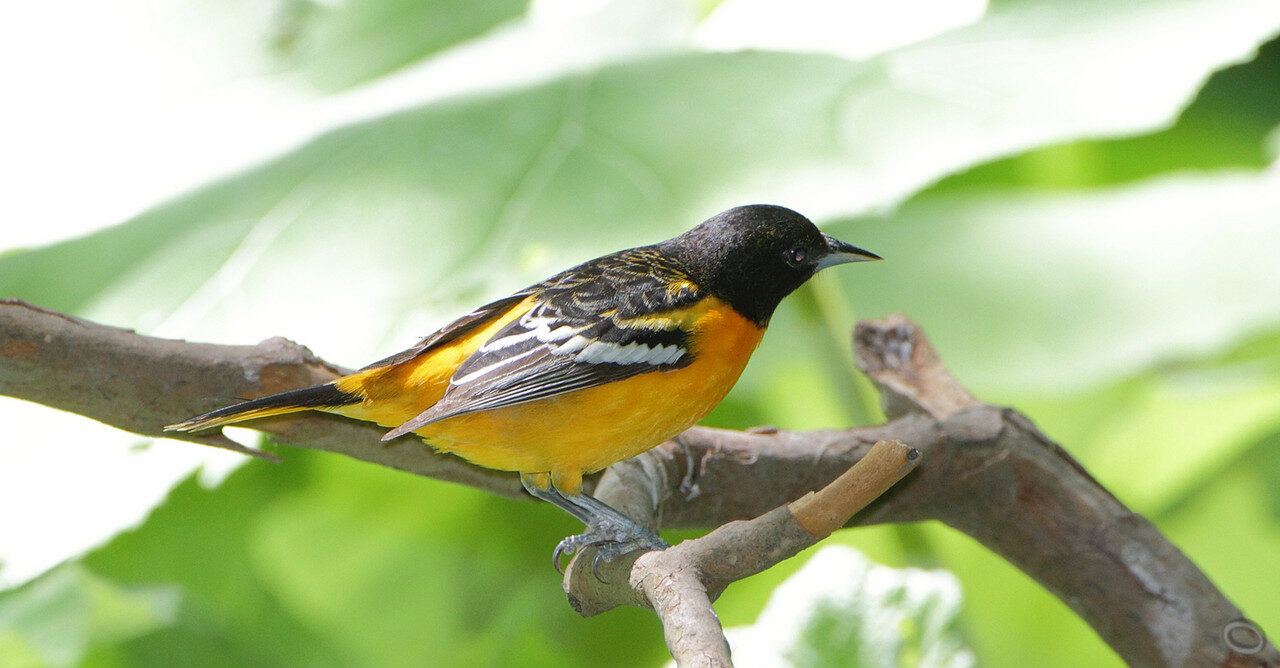Baltimore Oriole, Icterus galbula
Bill Rowe
The Baltimore Oriole, state bird of Maryland, is the first blackbird to be our Bird of the Week. Wait…what? Yes, that’s right: orioles are in the blackbird family Icteridae, known to birders as icterids. And like some other icterids, they aren’t primarily black, but you can see the family resemblance by noting the sleek, medium-sized body and the stout-based, sharp-pointed bill, which may remind you of a Red-winged Blackbird. Baltimore Orioles are fairly common residents over much of Missouri, typically found in open deciduous woods, parks, and riparian forest (i.e, along rivers and streams); in many states they are regular in residential areas too, but that is less true here. The nest, for which these birds are famous, is a hanging pouch or bag made of plant fibers and other stringy materials (including string). If a nest should last into the following year, the orioles seldom re-use it, but they may use the materials in the old one to make a new one. Orioles make themselves known, usually from the treetops, by their loud mellow whistles, which seem to come in somewhat random phrases.
IDENTIFICATION: A male Baltimore is easy, with its combination of black and orange; the female is more variable but always looks orangey with brownish-to-blackish areas on the head and back and bold white wingbars. An adult male Orchard Oriole—our only other regular species—is smaller than a Baltimore and a deep chestnut color where the Baltimore is orange, while a female Orchard is overall yellow-green rather than orange.
ST. LOUIS STATUS: A common summer bird in the habitats described above, typically seeking tall trees. They generally arrive in late April and depart again on an irregular schedule, some as early as late July, others not until late September. Most of them spend the winter south of the border, but once in awhile a Baltimore Oriole will linger into winter in Missouri and appear at someone’s feeder. But heads up: if you do see an oriole at your feeder in late fall or winter, be sure to get photographs and contact St. Louis Audubon, because it could be a much rarer species.
Learn more and listen to the songs and calls of Baltimore Orioles here.




